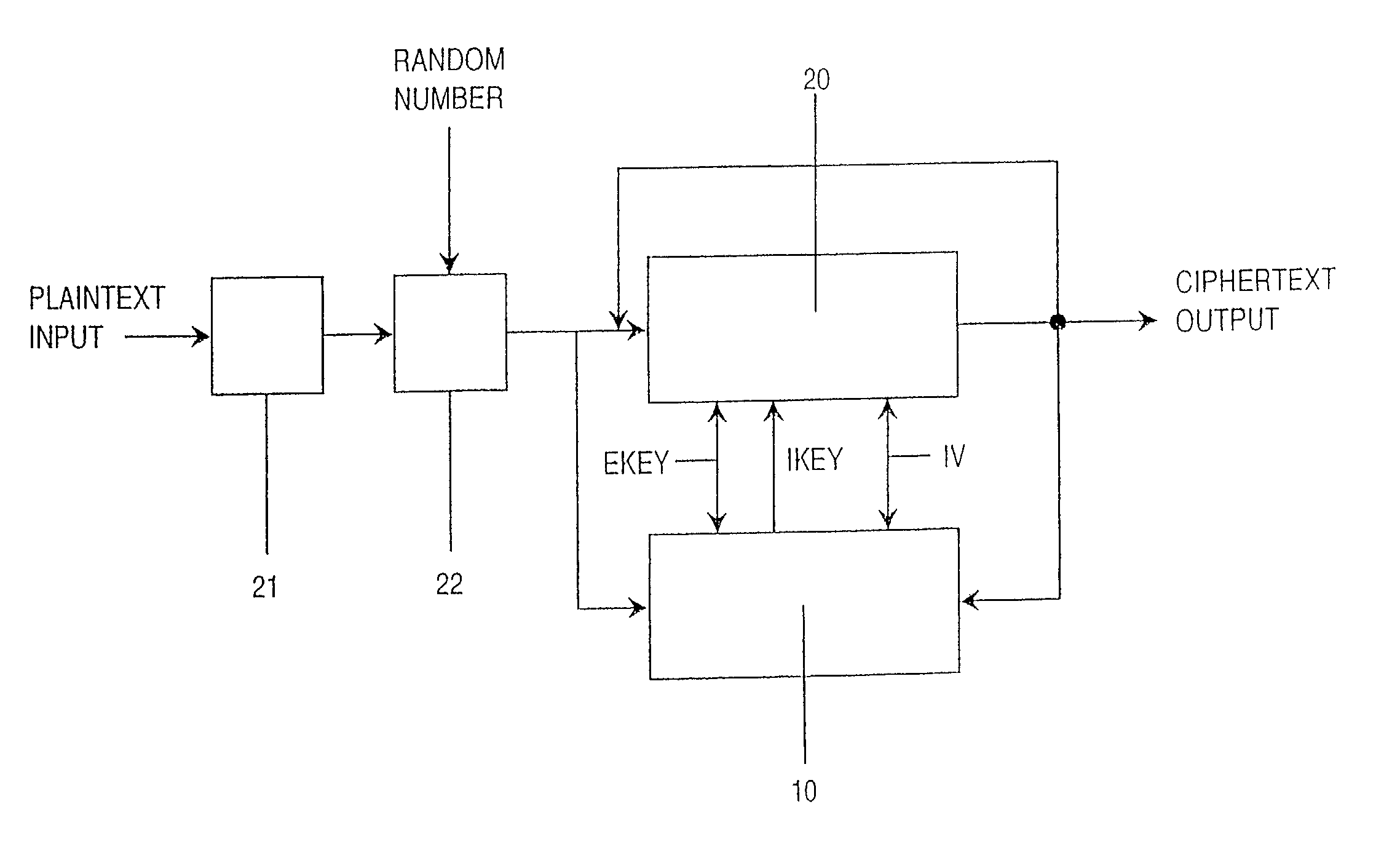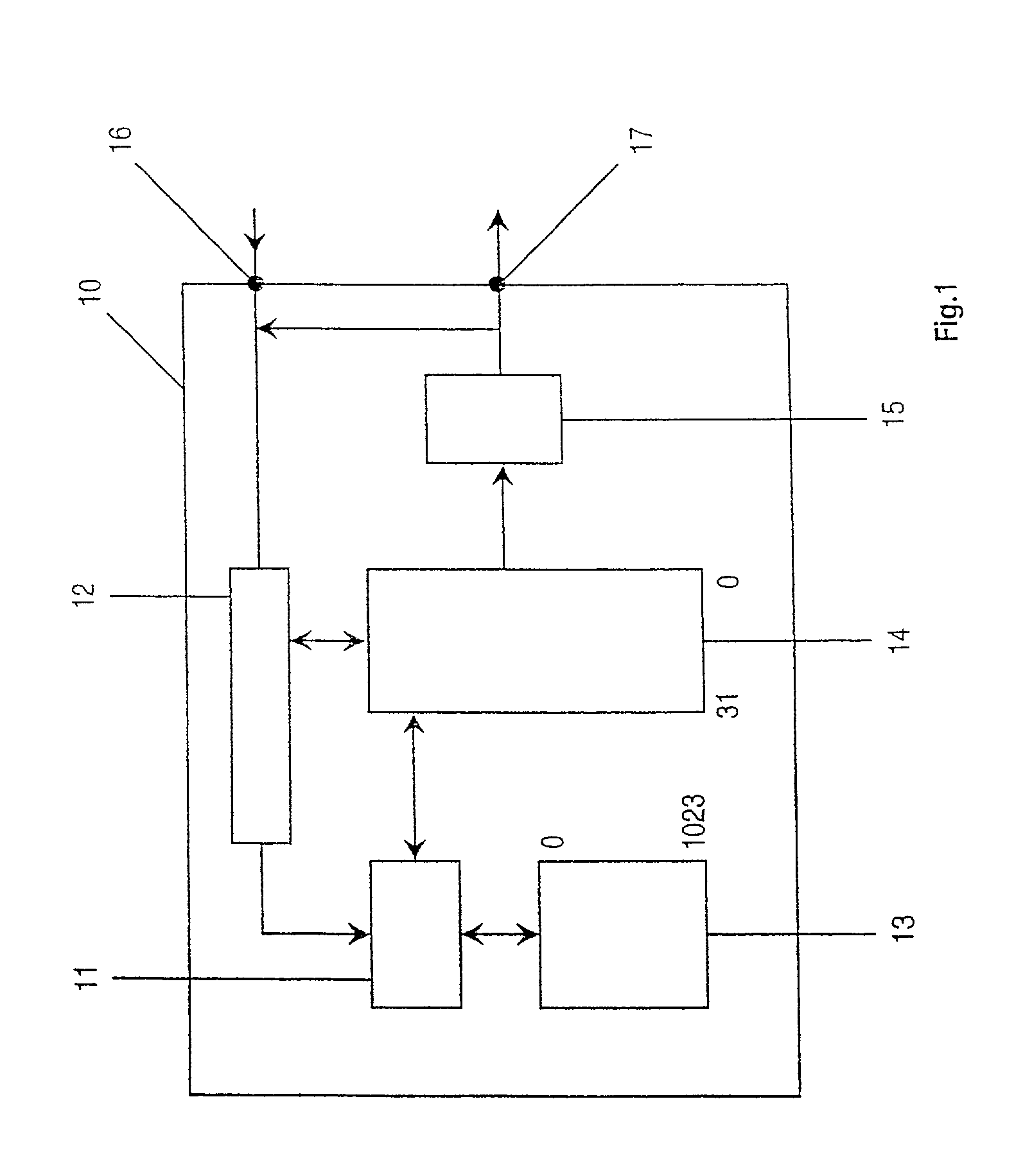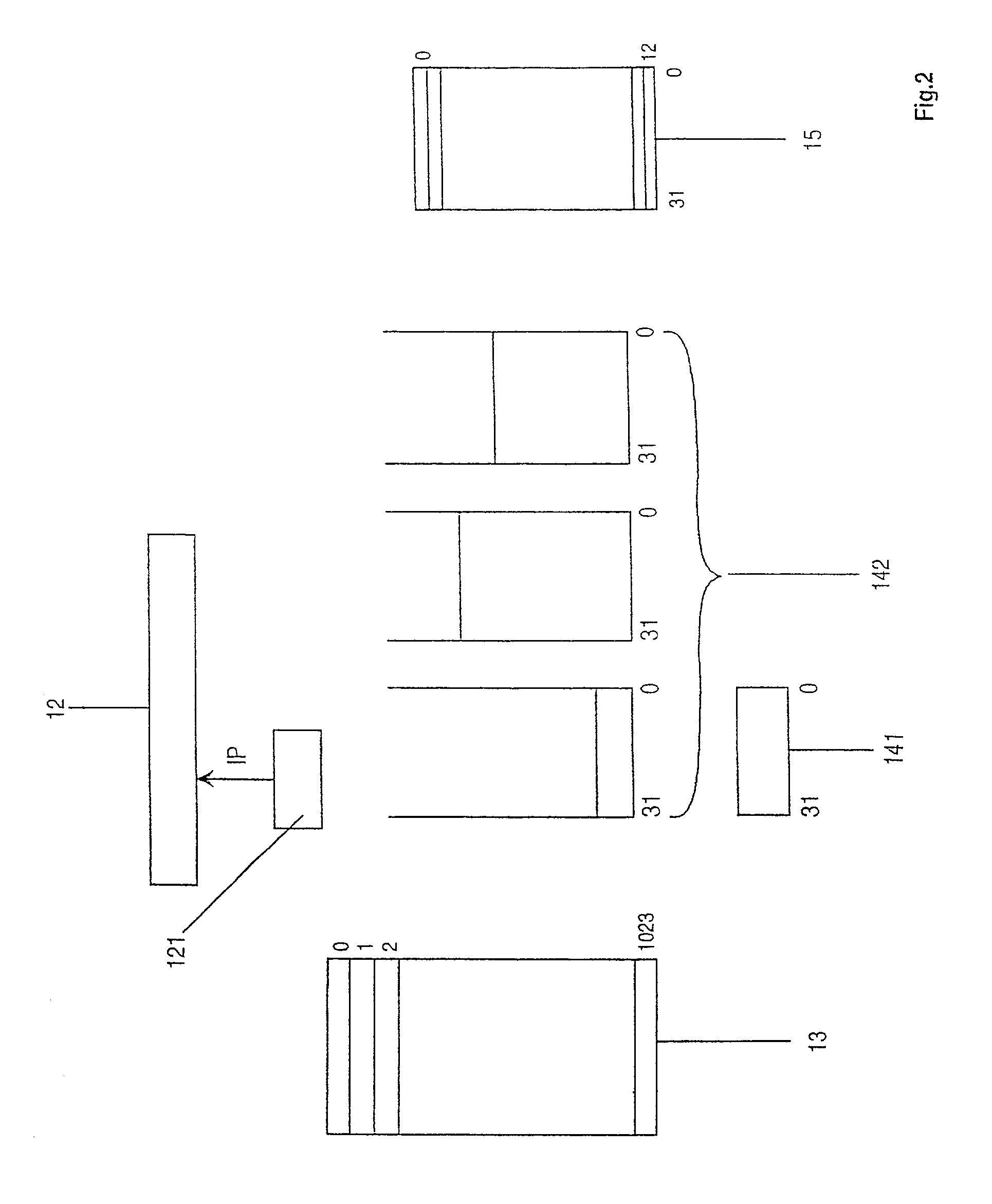Encryption and decryption of digital messages in packet transmitting networks
- Summary
- Abstract
- Description
- Claims
- Application Information
AI Technical Summary
Benefits of technology
Problems solved by technology
Method used
Image
Examples
Embodiment Construction
[0048] FIG. 8 shows schematically a first cipher unit 210 arranged in accordance with the description accompanying FIGS. 1-7. The cipher unit 210 is provided with a plaintext input for inputting an information packet to be encrypted, a cipher key input 212 for inputting a cipher key and a ciphertext output 213 for outputting an encrypted information packet. An information packet or an information cell 220 arriving at the cipher unit 210 typically comprises a block head 221 and a plaintext data block 222. The plaintext data block often has a variable length.
[0049] The arrangement according to the invention generates after encryption an output data block 230 comprising a block head 231 and an encrypted data block 232. The embodiment shown in FIG. 8 discloses the invention arranged to encrypt according the so-called bump-in-the-wire method, which means that only the data block 222 is encrypted while the block head 221 is transferred unencrypted to the outgoing block head 231.
[0050] In ...
PUM
 Login to View More
Login to View More Abstract
Description
Claims
Application Information
 Login to View More
Login to View More - R&D
- Intellectual Property
- Life Sciences
- Materials
- Tech Scout
- Unparalleled Data Quality
- Higher Quality Content
- 60% Fewer Hallucinations
Browse by: Latest US Patents, China's latest patents, Technical Efficacy Thesaurus, Application Domain, Technology Topic, Popular Technical Reports.
© 2025 PatSnap. All rights reserved.Legal|Privacy policy|Modern Slavery Act Transparency Statement|Sitemap|About US| Contact US: help@patsnap.com



